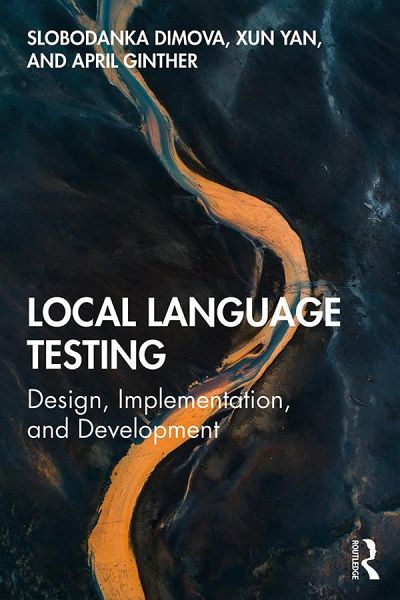
Local Language Testing
Design, Implementation, and Development
Versandkostenfrei!
Versandfertig in 6-10 Tagen
42,99 €
inkl. MwSt.
Weitere Ausgaben:

PAYBACK Punkte
21 °P sammeln!
Local Language Testing: Design, Implementation, and Development describes the language testing practice that exists in the intermediate space between large-scale standardized testing and classroom assessment, an area that is rarely addressed in the language testing and assessment literature. Covering both theory and practice, the book focuses on the advantages of local tests, fosters and encourages their use, and provides suggested ideas for their development and maintenance. The authors include examples of operational tests with well-proven track records and discuss:the ability of local tests...
Local Language Testing: Design, Implementation, and Development describes the language testing practice that exists in the intermediate space between large-scale standardized testing and classroom assessment, an area that is rarely addressed in the language testing and assessment literature. Covering both theory and practice, the book focuses on the advantages of local tests, fosters and encourages their use, and provides suggested ideas for their development and maintenance. The authors include examples of operational tests with well-proven track records and discuss:
the ability of local tests to represent local contexts and values, explicitly and purposefully embed test results within instructional practice, and provide data for program evaluation and researchlocal testing practices grounded in the theoretical principles of language testing, drawing from experiences with local testing and providing practical examples of local language tests, illustrating how they can be designed to effectively function within and across different institutional contextsexamples of how local language tests and assessments are developed for use within a specific context and how they serve a variety of purposes (e.g., entry-level proficiency testing, placement testing, international teaching assistant testing, writing assessment, and program evaluation)
Aimed at language program directors, graduate students, and researchers involved in language program development and evaluation, this is a timely book in that it focuses on the advantages of local tests, fosters and encourages their use, and outlines their development and maintenance. It constitutes essential reading for language program directors, graduate students, and researchers involved in language program development and evaluation.
the ability of local tests to represent local contexts and values, explicitly and purposefully embed test results within instructional practice, and provide data for program evaluation and researchlocal testing practices grounded in the theoretical principles of language testing, drawing from experiences with local testing and providing practical examples of local language tests, illustrating how they can be designed to effectively function within and across different institutional contextsexamples of how local language tests and assessments are developed for use within a specific context and how they serve a variety of purposes (e.g., entry-level proficiency testing, placement testing, international teaching assistant testing, writing assessment, and program evaluation)
Aimed at language program directors, graduate students, and researchers involved in language program development and evaluation, this is a timely book in that it focuses on the advantages of local tests, fosters and encourages their use, and outlines their development and maintenance. It constitutes essential reading for language program directors, graduate students, and researchers involved in language program development and evaluation.














